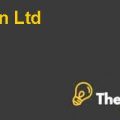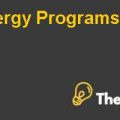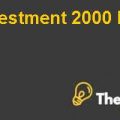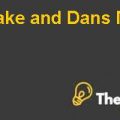Infineon Technologies: Time to Cash in Your Chips Case Study Solution
Background
Infineon Technologies operates in Munich and is listed on the Frankfurt Stock Exchange. The company develops and markets semiconductor products for a variety of microelectronic applications which mainly include mobility, energy efficiency and security. The company has 2600 employees and is ranked second in Europe while 12 globally.
Infineon has mainly three units Automotive (ATV), Industrial and Multi market (IMM) and Chip Card & Security (CCS). ATV contributes approximately 39% to the total revenue of the company while IMM and CCS contribute approximately 45% and 11% in the total sales of the company.
After the event of 9/11 and global economic recession, company faced many problems such that the profitability and share price of the company decreased heavily. The company intends to know that either it should pay the dividend or not, and if the company intends to pay then how much dividend it should pay. Furthermore,it also intends to know about its future policy.
In our report,we analyze the financial position of the company using ratios and free cash flow.This analysis enables us to recommend the dividend policy to the company. Along with this to develop the future financial policy of the company we conduct TOWS matrix and BCG matrix analyses.
Dividend Policy
Dividend policy is a policy that helps in deciding that how much dividend a company should pay to its shareholders. (Modigliani, 1961) There are too many theories that describe the relationship between the behavior of the shareholders and the dividend such that one suggests that in a perfect market, shareholders are indifferent between the cash dividend and capital appreciation and hence company can invest all of its earnings in the projects which have a positive NPV.However, in reality, the markets are imperfect andany cancellation or reduction in dividend can jeopardize the confidence of the shareholders and ultimately can affect the share price. (Bhattacharya, 1979)
Infineon Technologies intends to know that whether it should pay the dividend or not and if it decides to pay then how much dividend it should pay.By analyzing the ratios of the company we can conclude that either company should pay the dividend or not. And if the company is required to pay the dividend,thenby calculating the free cash flow we can conclude how much dividend the company should pay to its shareholders.
Financial Ratios
Profitability Ratios:
Profitability ratios express the ability of the company in generating earnings in relation to expenses. In analyzing the profitability position of the company we generally calculate gross profit, net profit and asset turnover ratio of the company. (Osteryoung, Constand, & Nast, 1992)
The gross profit margin of Infineon Technologies was 48.01% in 2008, while it was 50.49% in 2011.Similarly, the net profit margin of the company was -75.20% in 2008, while it became positive 28% in 2011, like the net profit margin assets turnover ratio increased from -42.04% to 19.05%. By analyzing these ratios, we can conclude that the company effectively controls its expenses which improves its overall earning position.
Liquidity Ratios:
Liquidity ratios reveal the ability of the company to payout its obligation. In analyzing the liquidity position of the company we mainly calculate current ratio, quick ratio and interest coverage of the company. (Kirkham, 2012)
The current ratio of the company was 1.42 in 2008, while it became 2.19 in 2011, along with this,during these four years,the quick ratio also increased from 1.24 to 1.93.Furthermore, the interest coverage ratio of the company also increased from -0.37 to 28.31. The liquidity position of the company reveals that the company has a sustainable future and hence it can pay out the dividend.
Gearing Ratio:
Gearing ratio describes the proportion of debt and equity which a company uses to support its long-term growth. (Tobias Adrian, 2010) To analyze the gearing position of the company we calculate long-term debt/equity, total debt to equity and gross debt/EBITDA ratio.
The long-term debt/equity, total debt to equity and gross debt/EBITDA ratios of the company are approximately 7.06%, 15.29% and 2.29. The gearing position of the company reveals that the company uses equity more than debt hence the company has alow-risk profile.
Performance Ratio:
Performance ratio describes that how well company uses its resources to generate income. Receivable turnover days, inventory turnover days, payable turnover days and assets turnover ratio are mainly calculated to analyze the performance of the company. (Nina Ponikvar, 2009)
Concern:
The profitability, liquidity and gearing position of the company improve with the passage of time, therefore, the company can pay cash to shareholders in the form of dividend. See Exhibit 1
Free Cash Flow
Free cash flows measure the cash position of the company which it is able to generate after incurring the expenses to maintain or to expand its asset base. The free cash flow of the company can be invested in worthwhile projects or can be distributed to the shareholders as a dividend or company can use it in any way. (Larry H.P.Lang, 1989)
In calculating the free cash flow of Infineon Technologies, we assumed that the yearly working capital requirement of the company is 5% of the total revenue. By using the provided data, we conclude that the free cash flow of the company is -451.85million. As the free cash flow is negative therefore, we conclude that the company should not pay the dividend to its shareholder. However, if we assume that the company will not invest any amount in the R&D or it will reduce its CAPX to 10% of total revenue then the free cash flow of the company will become-12.85 million or 35.45 million hence after reducing CAPX company can pay the dividend to its shareholders...........................
This is just a sample partial work. Please place the order on the website to get your own originally done case solution.










